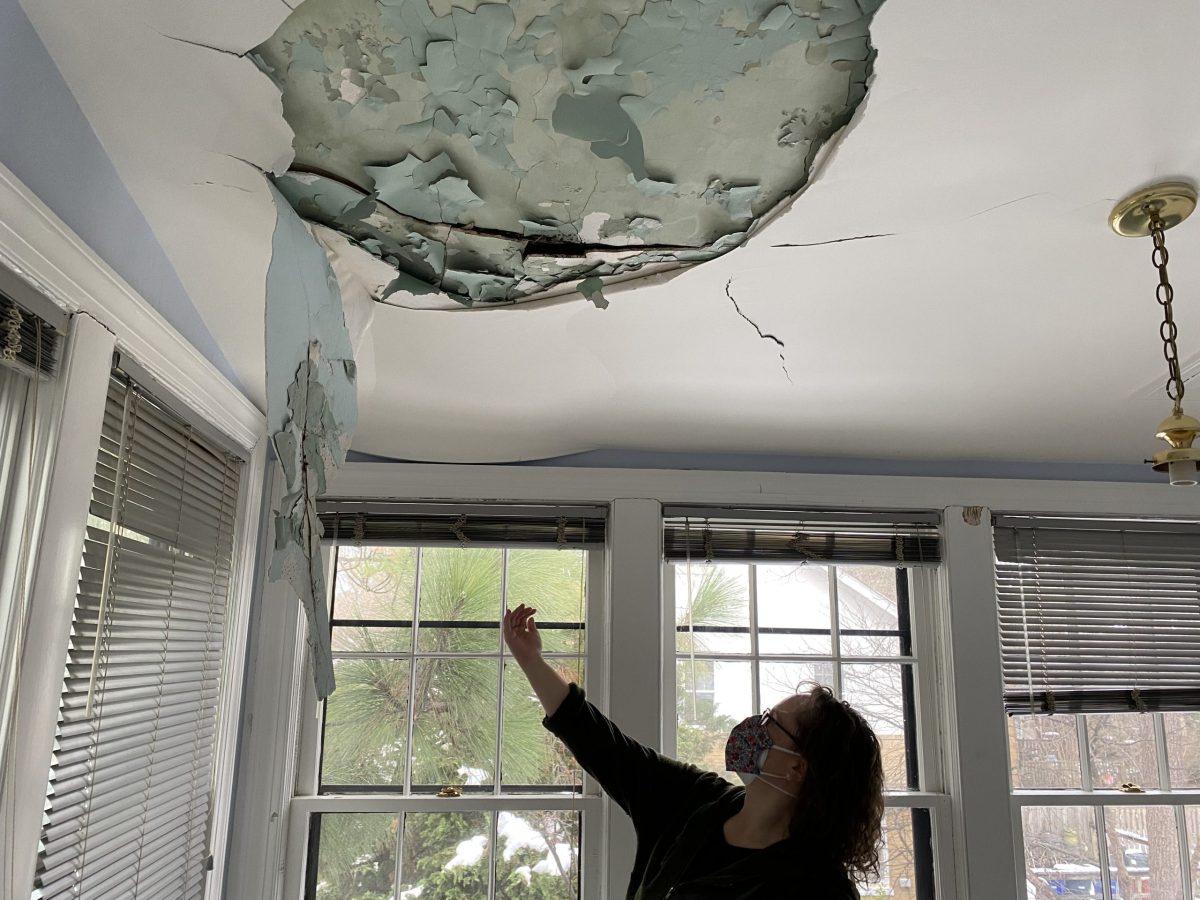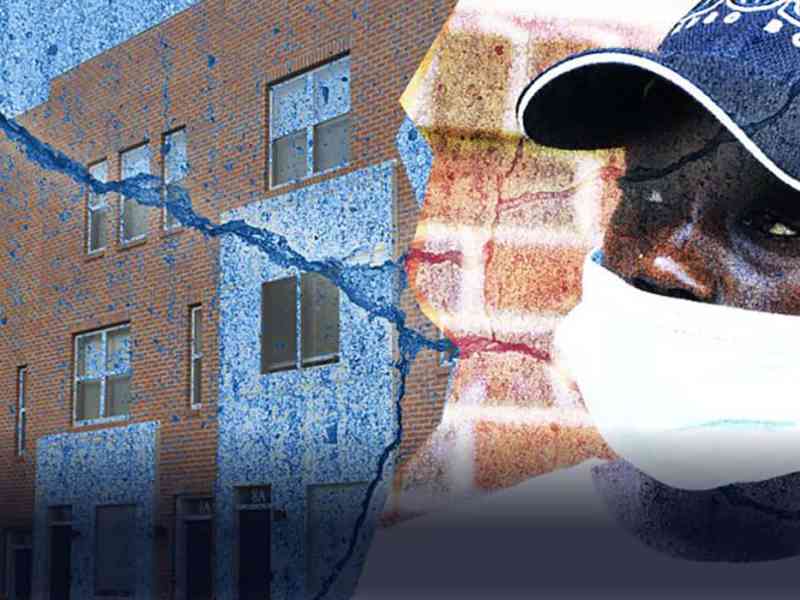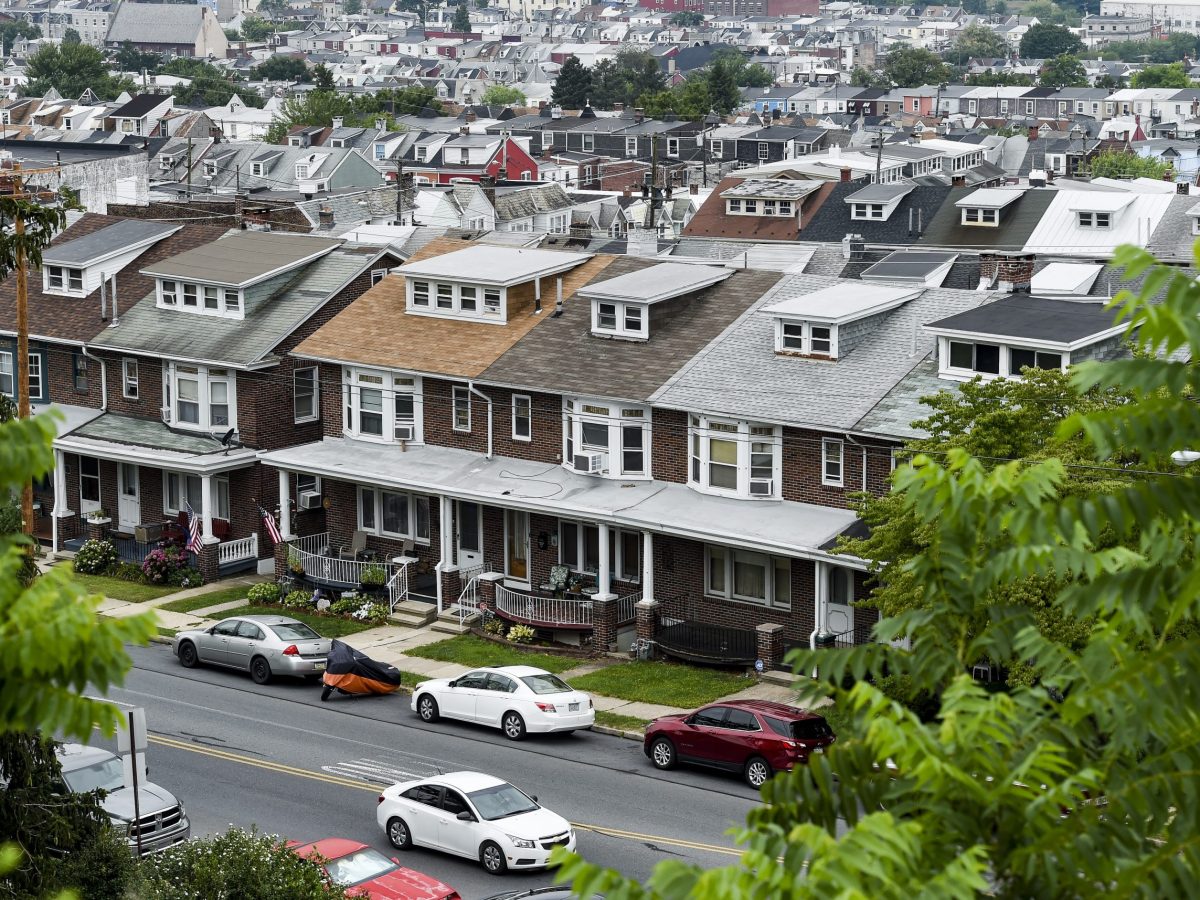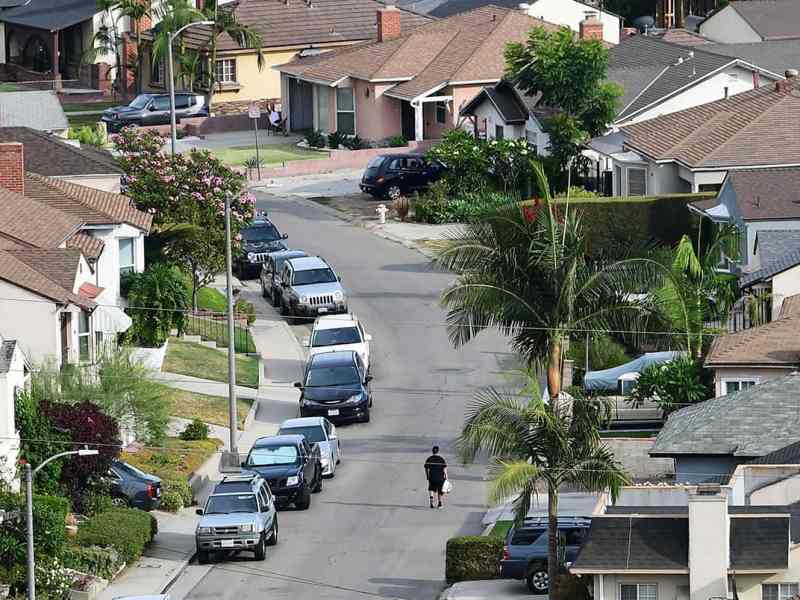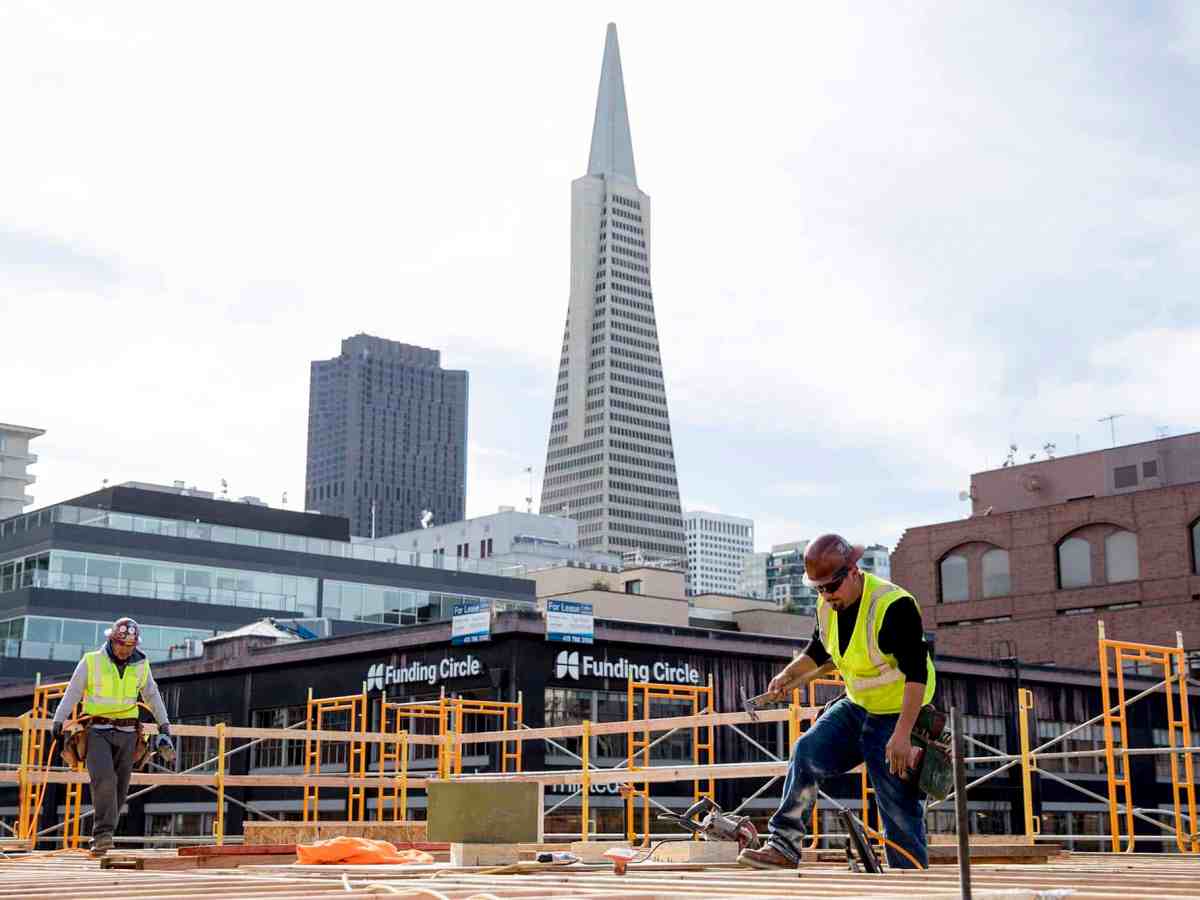Editor's note:
This story first appeared on washingtoninformer.com as part of Our House D.C., a partnership between the Center for Public Integrity and the Washington Informer that explores keeping homes Black-owned in D.C.'s Wards 7 and 8. You can sign up for the Our House D.C. newsletter here.
Subscribe on Google | Apple Podcasts | Spotify | Amazon

The houses on the Maryland side of the border were cheaper, but Patricia Robinson’s father wouldn’t hear of living outside Washington, D.C. “I was born in D.C., and I’m gonna die in D.C.,” he said. He bought a tidy brick home in Northeast in 1974, and remained a Washingtonian until his death at 101.
For years, Patricia Robinson worried she might not be so lucky.
Robinson, who still lives in the house her father bought nearly five decades ago, applied in 2018 to a District of Columbia program that promises to repair the homes of low-income residents. Robinson hoped the Single Family Residential Rehabilitation Program would replace her roof and remove the mold growing like stubble in her entryway closet. Instead, Robinson found herself on a waitlist that runs more than 200 homeowners long.
“If they don’t hurry,” Robinson used to think, “I might have to sell my home.”
As property values and taxes have climbed in D.C., some low-income homeowners have looked to the repair program, which paid for fixes like roof repairs and accessibility retrofits at 238 homes from October 2017 to October 2021, as a way to help residents keep homes they cannot otherwise afford to maintain.
Most applicants are seniors and Black homeowners like Robinson, as well as homeowners living east of the Anacostia River. Without help paying for repairs like leaking roofs, some say they feel pressured to sell their properties and leave D.C., joining the waves of Black Washingtonians who have moved away in recent decades.
But applicants wait an average of three years for repairs, according to the Department of Housing and Community Development, which runs the program. Those delays have had serious consequences. Applicants described watching water damage eat at their homes in the years since they first sought help. Others reported a cycle in which DHCD staff drafted construction plans and then, months later, repeated the same steps, leaving homeowners dizzy and distrustful. At least two homeowners died before the housing agency could start repairs, one during the reporting of this story.
When repairs have gone forward, DHCD staff acknowledge that, in the past, the department entertained almost any fix homeowners requested and had no standing to go after contractors for shoddy workmanship.
The repair program has undergone a series of personnel changes and reforms since 2015. But wait times remain years long for many applicants. Incomplete record-keeping makes it difficult to identify where applications stall. DHCD staff acknowledged the backlog but said the program was never designed for emergency repairs and that recent program improvements aim to cut wait times.
“Our only interest is to make those resources available for folks to fix their homes,” said Drew Hubbard, the interim director of DHCD. “I have no interest in anyone losing their home. Quite the opposite. I think one of the features of this program is to help people stay in the city, especially long-term residents that are invested here.”
Hubbard said that the program, which had a $2 million budget in 2021, is “a top priority at the highest level of this agency. … It’s going to succeed and do more than it has over the past couple years.”
At home in Lamond-Riggs on a Saturday afternoon in January, Robinson and her daughter, Carlin Brodie, sat in the living room, the family’s de facto portrait gallery, surrounded by sepia-toned photographs and pencil sketches.

Last fall, Robinson, who is in her 70s and runs an air purifier in her home for fear of inhaling mold spores, discovered a way to work around DHCD. A different city department also replaces roofs. They replaced hers within months of receiving her application.
“We’re just relieved it’s done,” Brodie said. The two programs are a stark contrast, she said, one complex and inefficient, the other professional and quick to respond.
“For a long time, I gave [DHCD] the benefit of the doubt,” she said, “Without me trying to pass judgment on the individuals in the agency, I’ll just say it’s a very cumbersome process. It’s a very complicated process. It’s frustrating.”
For some Black residents, delay and disappointment
Councilmember Janeese Lewis George, who represents Robinson’s neighborhood in Ward 4, said SFRRP could help to keep Black homeowners in D.C.
“Our elderly residents are counting on this program to work effectively and deliver much-needed repairs to their homes,” Lewis George said. “Otherwise, we risk seeing more longtime community members pushed out of the District and worsening the housing crisis that has displaced tens of thousands of Black D.C. residents from our city.”
D.C. was once a majority Black city. By 2019 only 44% of D.C. residents were Black. Homeownership among Black Washingtonians also dropped between 2009 and 2019, tracking an overall decline in homeownership in the city.
“I just feel like this is systemic discrimination,” said Sabrina Campbell. Her father, a stage four lung cancer patient, died in February, nearly a year after he applied to have his roof repaired through SFRRP. “I just truly believe it’s a way to push the seniors out, to get their properties for cheap.”
“Whether that’s their intention or not,” she added, “it is happening.”
City records show that 69-year-old Larry Campbell is representative of applicants to SFRRP, which is open to low-income homeowners who have lived in their homes for at least three years and meet other qualifications. Black homeowners submitted 94% of the applications for assistance pending as of early 2021, and homeowners 60 and older accounted for 77%of applicants. Like Campbell, about half live east of the Anacostia River.
The stories of other Black homeowners in Ward 7 and Ward 8 follow a similar arc of delay and disappointment. Serena Barnes said she moved out of her Congress Heights home in 2019 after DHCD staff told her they were ready to start construction. But the contractors never came. She’s lived with her son and other family members in the D.C. area ever since.
“I have been entertaining the option of selling my home and moving to Florida,” Barnes wrote in an October 2021 email to Ward 8 Councilmember Trayon White, Hubbard and other DHCD staff, “but that will take me so far away from my grandchildren and I will really miss them.”
“They just let us sit on the fence and wait,” she wrote in the email, “hoping we will not fight and eventually just give up.”
After Public Integrity started reporting on the repair program, DHCD agreed to exceed their typical $75,000 budget limit on Barnes’ house. As of press time, Barnes said DHCD told her contractors would start construction on her house in March. She believes the new contract does not include repairs she was originally told would be done, however.
“I’ll manage the best way I can with my family helping me,” she said.
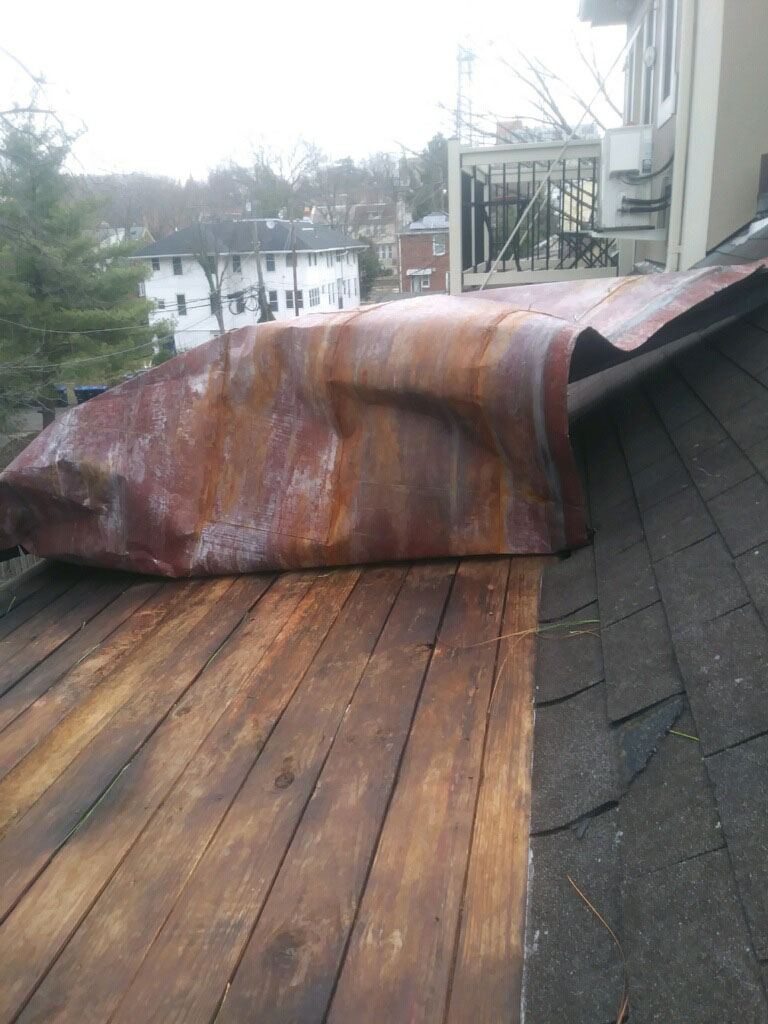
Deteriorating homes
One of the most common experiences homeowners reported was feeling caught in a loop, repeating the same steps of the vetting process as the condition of their homes worsened.
Sometimes, the cycle went like this: A change to the program, to the home or to the needs of the homeowner, would prompt DHCD to revise construction plans. Revising meant a new scope of work. A new scope of work meant delay. Delay meant rechecking program eligibility. And by then, the cycle could begin again.
In Northwest, homeowner Sara Meacham applied for assistance from SFRRP after the metal roof covering a quarter of her home peeled off like the lid of a sardine can during a “bomb cyclone” rain storm in March 2018. (Meacham tried to fund the roof repair through her home insurance company, she said, but only received enough money for a temporary patch and tarp.) DHCD funneled Meacham into a pilot program for urgent roof repairs, and she expected a fix within months.
But progress stalled. Meacham felt that DHCD staff were ignoring her calls. New construction plans were made, then scrapped. Meacham, who said she is disabled and has other serious health conditions, started a timeline to keep them straight.
In spring 2021, a contractor hired by DHCD pulled permits to repair her roof – then backed out, Meacham said, before construction could start.
“I never thought I’d be in a position where I needed help, but I do,” Meacham said. “I’m grateful that they are trying, but what in the hell? What is going on over there?”
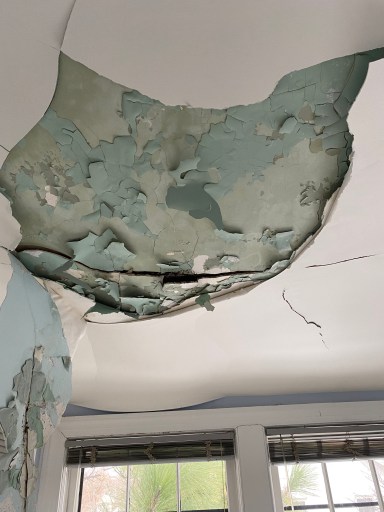
While she waited, what remained of Meacham’s roof deteriorated. Water damage has carved a blue-gray gash the size of a skylight in the ceiling of an upstairs bedroom, strips of discolored paint dotted with black mold dangling from its edges like tattered curtains. She recently gave it a name: Kevin the chasm.
Meacham fears mold has spread throughout the house. Every winter, she said, she hopes it will be her last with only soggy wood and drywall covering much of her home.
In early February, DHCD staff told Meacham that colleagues in another department were in the process of selecting a contractor for her house. She doesn’t believe they will.
“You’re in that holding pattern of, ‘Do I wait? What do I do?’” she said.
DHCD spokesperson Richard Livingstone said that 54 applications accepted in 2018 were still waiting for repairs to be completed as of December 2021. Hubbard said he’s emphasized that staff should “be up front and try to give [homeowners] a realistic time frame” for repairs.
For Thelma Lawson, a homeowner in Ward 8, SFRRP was worth the wait.
“We’re very pleased with the repairs – the roof being replaced on the house, the ceilings and things being repaired,” Lawson said. But she added that while she and her husband were waiting, she used a pan to catch leaks and called DHCD staff weekly until they sent someone to inspect her home.
‘This is how he’s treated in death’
For other homeowners, the offer of assistance from DHCD’s home repair program has come too late or not at all.
In 2015, The Washington Post profiled Preston L. Williams, a 68-year-old homeowner who, according to the Post, had spent two years on the rehabilitation program’s waitlist. Alayna Waldrum, a housing advocate for D.C. seniors, remembers Williams’ home “crumbling around him,” she said in an interview with Public Integrity.
After the Post article and a series of meetings with DHCD staff, Waldrum said, she and Williams set a date for DHCD staff to walk through his home. When Waldrum arrived for the appointment, the door was unlocked. She walked in, she said, and found Williams had died.
“There was no reason this should have taken this long,” Waldrum said.

Local repair programs also could not help Sabrina Campbell’s father, Larry Campbell, fast enough. When Campbell realized the long wait time at DHCD, she applied to two other repair programs on her father’s behalf. He died before any could fix his house. Though one program told Campbell she could reapply, she now plans to pay for the repairs, little by little, out of pocket.
“Almost 30 years of being a homeowner, paying property taxes, working in the federal government over 35 years, paying taxes in D.C. and now this is how he’s treated in death. That’s not right,” she said. “He’s been a part of this community, and he’s made his contributions.”
When asked what he thought DHCD should do if a family member inherits a property following the death of an applicant to SFRRP, Hubbard said that “to the extent that we can still complete that work on behalf of an heir or otherwise, we will make every effort to do it.”
Reforming the repair program
Since 2015, at least four people have led the single-family repair program. An interim manager started work in February after the previous manager moved to another DHCD program.
The same period saw SFRRP undergo reforms aimed at reducing the backlog of cases and improving the quality of workmanship.
In the past, Hubbard said, construction contracts were between homeowners and contractors, so that “if that work was not done properly, we didn’t have any standing to go after that contractor to get them to correct it.” Hubbard said companies hired through SFRRP now contract with D.C. government directly, giving DHCD recourse to ask contractors to correct their work as needed, though he said complaints about construction quality are uncommon.
Perhaps the biggest change is that the city no longer loans homeowners money to cover repairs, but provides only grants, Hubbard said.
The department has also narrowed the type of projects it finances. It covers roof repairs, related interior fixes and home accessibility retrofits only, rather than adding more cosmetic fixes to contractors’ to-do list at the request of homeowners.
“It goes back probably more years than this administration has been here, but I’ve seen scopes of work on completed jobs through this program that included some things that never should have been approved, in that they were purely aesthetic,” Hubbard said, like knocking down a wall to create an open concept kitchen.
Hubbard said DHCD is also in the process of hiring a firm to provide temporary fixes, like roof patches, which would prevent damage from worsening while homeowners wait for larger repairs.
Tracking the reforms
City records suggest the changes had mixed results. The number of repairs completed under the program rose modestly from 2017 to 2018, but processing times in 2018 were significantly delayed due to understaffing – including in the program’s top job, which stood vacant for a year.
In 2019, staff said a policy of prioritizing “older, more complicated cases” took more staff time and reported that the average time from application submission to project completion was two years and nine months, up from their last report in 2018.
Then came the pandemic. The program ceased all construction from March to September 2020. When it resumed, Hubbard said, DHCD struggled to attract contractors busy with more lucrative private home renovations, though the program has fielded more interest recently.
Other experiments to improve the program proved short-lived.
Habitat for Humanity of Washington, D.C., was part of a pilot program intended to help SFRRP applicants with critical roof repairs. But Susanne V. Slater, the nonprofit’s president and CEO, said the pilot ran into problems almost immediately, when DC Habitat staff realized they would need to front the costs of repair, which the nonprofit could not afford.
Slater also had misgivings about the limited scope of repairs DC Habitat could offer under the pilot, which ended in 2019. For homes with leaking roofs, she said, the typical funding covered the cost to repair the roof alone, but not to fix serious problems – like mold or structural damage – caused by leaks.
“We felt that we couldn’t do a complete, professional job,” she said.
Incomplete record-keeping makes it difficult to find bottlenecks in the repair process. DHCD records provided to Public Integrity in response to a records request show that, from 2017 to 2019, the agency tracked the date it received each application and the date of underwriting decisions in a spreadsheet, but not other dates and details.
In 2020, the agency started recording additional details about each application, including the dates construction began and ended, in a single database. But staff do not always record each milestone, making it impossible to know from the database alone where many applications stand.
‘We can not have homeowners and seniors living in dilapidated conditions’
DHCD staff and other city leaders said they will stand by SFRRP, and that recent changes will help it to run more efficiently.
At-Large Councilmember Anita Bonds, who chairs the Council’s Committee on Housing and Executive Administration said that D.C. “should absolutely invest more money into home repair programs like SFRRP” and has “enough money in our budget to support this program while building more affordable units.”
Bonds said switching to a grant-only program has reduced the application backlog, and that digitizing the application process and creating virtual walkthroughs for contractors have improved the program’s efficiency.
But the program could improve the way it assigns projects to contractors, she said, and a separate D.C. department focused on smaller-dollar housing projects might be helpful. She also praised the plan to provide short-term fixes while homeowners wait for repairs. “I will maintain strict oversight to make sure that this is done properly because we can not have homeowners and seniors living in dilapidated conditions while they wait,” she wrote.
“I’m grateful that they are trying, but what in the hell? What is going on over there?”
Sara Meacham, dc HOMEOWNER
Hubbard said SFRRP is “resourced well, so it’s really about streamlining it, making sure it’s efficient. … It’s not about it being a competing priority with our other functions.”
Slater, who in addition to her role at DC Habitat chairs the city’s Housing Production Trust Fund Advisory Board, said the home rehab program would likely need more resources to meet the backlog of applications. Not just money, she said, but also support from nonprofits to help homeowners navigating the program and large contractors.The trust fund is D.C.’s major funding source for affordable housing.
“We have a responsibility to the taxpayers to make every dollar count,” Slater said. “Running an underfunded program with a lot of unhappy people is, in my personal opinion, not the best option. Either you do it right or you don’t do it.”
Slater recommended DHCD undertake a more comprehensive analysis to determine the need for home repairs and what it would take to address them.
“If it were at all possible [to expand the program], that would be ideal, but that’s up to the mayor and city council and so forth,” she said. “Right now, there’s insufficient resources to do it right.”
‘That’s missing now’
As policies and personnel changed at DHCD, Patricia Robinson waited.
In August 2021, almost three years after applying to the program, Robinson signed a final document approving construction plans.
Then, the process stalled. In October 2021, her daughter Carlin Brodie emailed Gentry Alexander and other DHCD staff members. “At this point, I am asking for you to give us the honest truth: Is my mother ever going to get a roof?” she asked. “There is no need to keep stringing us along, we are adults and can handle it.” Alexander apologized for the delay. “This process has taken longer than my team initially anticipated, but I can assure you that your mother’s home is our highest priority,” he wrote.
Construction crews walked through her home to prepare bids for DHCD. None started construction.In the fall, Robinson hedged her bets. She applied to a different weatherization assistance program through D.C.’s Department of Energy and Environment. They replaced her roof, gutters and sump pump in early February.

Inside her home, the paint on her kitchen ceiling still peels. Family portraits – hung over the mantle, perched on bookshelves, tucked into every corner of her living room – glint in the afternoon sun. Brodie hopes the family can repair visible water damage one room at a time.
Outside, the neighborhood is changing. It used to be filled with Black families like the Robinsons, many with children about the same age as her own. Census data shows the neighborhood is still predominantly Black, but on Robinson’s block, some of the neighbors she knew best have sold their homes. Those who remain are growing old.
Her next-door neighbor, the son of a Black homeowner who lived in the neighborhood even before Robinson, sold the family’s house a few years ago. The new owner removed the side porch that used to face Robinson’s like a mirror image, an invitation for neighbors to chat from one porch to another.“It was more like a community where you could talk to your neighbors very easily,” Robinson said, “and that’s missing now.”
How we did it
Reporters Ashley Clarke and Amy DiPierro interviewed dozens of people for this story. They filed two Freedom of Information Act requests with the D.C. Department of Housing and Community Development and one with the D.C. Office of the Inspector General.



